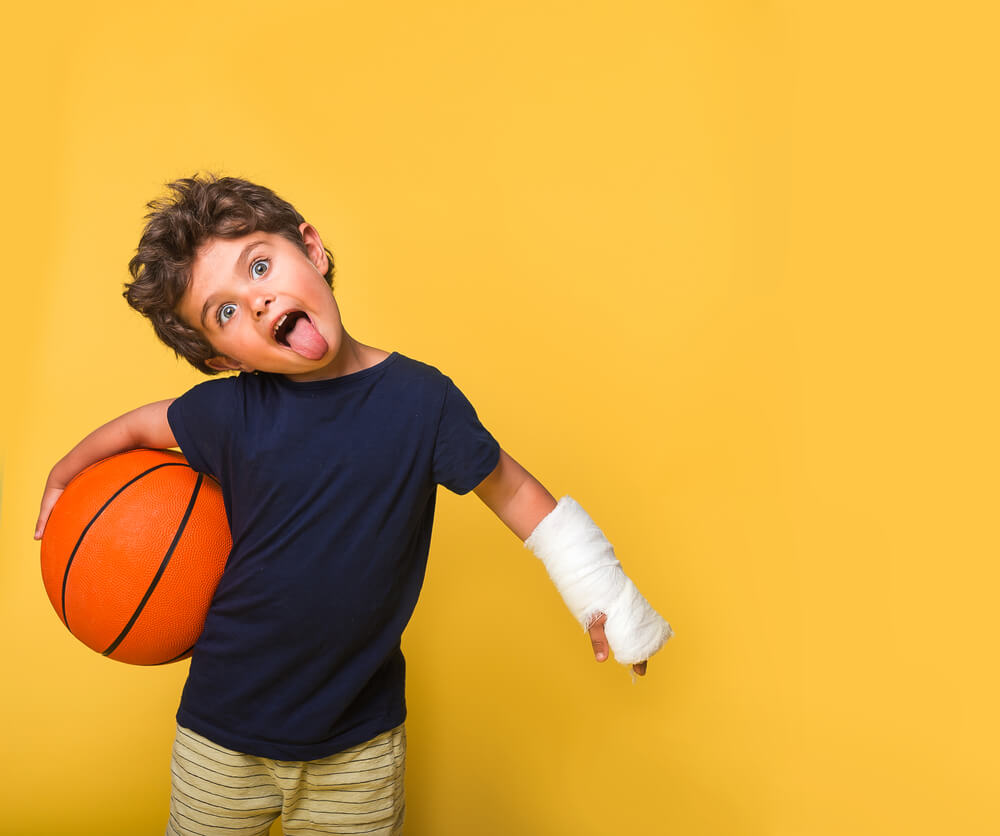It’s interesting to note that most parents don’t think of the strength of their children’s bones when they consider and worry about their health. In all fairness, children are generally considered to have strong bones in the sense that they aren’t as damage-prone compared to adults, and even after breaking, the kids’ bones tend to heal relatively fast. However, no one is going to remain a kid forever. Aside from vitamins for strong bones and joints, instilling healthy lifestyle and diet habits in your child during childhood is the only foolproof way to make sure they will have strong bones when they grow up and continue aging and reduce the risk of osteoporosis significantly.
What Makes Childhood Crucial for Proper Bone Development?
As children grow, their bones act as their bodies’ main support and framework. Just like everything else in the human body, bones also change, and the living tissue constantly adds fresh bone to replace the old one. This particular process is considerably more prominent during childhood and adolescence, where girls reach the peak of their bone density and mass by the time they’re 18 and boys by the time they’re 20. After we hit this particular point in life, the process starts to slow down and slowly reverse as we age, meaning that it gets more and more challenging for our bone tissue to renew and replace itself. This is precisely why the key to ensuring your children have strong bones is to act during the prime time of their childhood and teenage years.
What Can Parents Do for Their Kids’ Bone Health?

Children can be fussy sometimes, but the fortunate thing for parents is that nurturing their kids’ bones doesn’t differ a lot from other healthy habits and behaviors they already want to instill and maintain for proper growth and development.
Of course, one of the most important things that all parents need to remember when trying to teach their children anything is that they have to be their role models. Regardless of the interest that they show in the everyday activities of adults, you can be absolutely certain that children are watching you and are constantly under a strong influence of your behavior, both good and bad.
While there are plenty of kids-friendly vitamins for strong bones and joints that your children can happily take as candy, the most crucial factors for good and lifelong bone health lies in adequate physical activity and a balanced diet. For instance, nutrition-wise, it’s essential for kids to get enough vitamin D and calcium from their food.
Nutrition That Serves Bone Health
The most well-known source of calcium is milk. Just one standard 8oz glass of milk provides a third of the recommended daily dose of calcium for kids (and a quarter for teenagers). Many parents will be faced with the fact that their kids may not like milk. This is where you can try some tricks to make the drink more appealing to them, such as adding some chocolate to it. Also, don’t forget other tasty dairy treats that are also rich in calcium, like fruit yogurts and all kinds of cheese (including cream cheese). Of course, dairy is not the only food group that’s a great source of calcium. Consider the following foods and drinks as well:
- Sardines and salmon
- Whole wheat and white bread
- Corn and flour tortillas
- Tofu, soy, and soy-based drinks
- Orange juice
- Cereals
- Kale and broccoli
- Chocolate pudding and vanilla ice cream, made with milk
In What Way Is Physical Activity Bone-Beneficial?
You’re probably already aware that physical activity strengthens muscles. That’s not all – it also strengthens bones. All kinds of physical activity will prove to be beneficial and healthy for growing kids one way or the other.
That said, organized sports are great for overall health, motor development, stronger bones, and social skills. On the other hand, activities such as cycling and swimming are amazing for muscles and growth but aren’t the ideal choice of exercise when it comes to building bone mass and density in particular. Resistance exercise such as weight lifting is a great example of bone-strengthening activity, but it may be more suitable for teenagers. In general, the best kind of exercise for kids in terms of keeping their bones strong include the so-called weight-bearing activities, such as:
- Running, hiking, dancing, and walking
- Gymnastics and aerobics
- Soccer, tennis, volleyball, and basketball
- Skiing and skating
- Jumping rope and skateboarding
The typical challenge for parents is to have their kids get enough physical activity, especially in this digital age that we live in. However, things can go to the opposite extreme in teenage years, when it’s not uncommon for kids to become obsessed with losing weight and, as a result, overtraining themselves. If your teen wants to lose weight or become fitter, make sure to be there for them and help them by providing the correct information about the right amount of exercise. Also, prepare them healthy and nutritious meals that will build muscle and boost their metabolism, not make them underweight. Eating disorders and overtraining, and being too thin for one’s height in general, can actually make the bones weaker, especially in girls who could then experience a poor production of estrogen, an essential hormone for their health, bones included.
Most Common Broken Bones in Kids

The biggest mistake parents make is to start acting overprotective of their children when it comes to all physical activity after going through the ordeal of their child fracturing a bone. However, these accidents can happen even in the safety of one’s home. In that sense, it’s crucial to let your kids resume their play and physical activity as soon as they’ve recovered because, as mentioned, the activity will make their bones stronger.
That said, it’s not that surprising that the most common broken bones in kids include leg and arm bones. Arm bones are especially prone to fracturing as kids will use their arms to slow down the fall. For instance, wrist and elbow bones tend to be the most common broken bones around the age of 10. Aside from arm bones, lower leg bone fractures are also common, especially as a result of sports injuries where there’s heavy contact involved.
Do Broken Bones Heal Stronger?
We have often heard that broken bones heal stronger, but that’s not exactly the entire truth. When a bone gets fractured, the healing process starts immediately. The callus forms around the place of the fracture to protect it. Therefore, as the bone heals and the injured body part is put in a cast, there will be a point where the fractured area, covered with callus, will be stronger than the bones surrounding it. But, over time, once the healing process is completed, the fractured area will “level” itself out with other bones and return to normal in terms of its mass and density. So, ultimately, the answer to whether broken bones heal stronger is no.
While candy-like vitamins for strong bones and joints make for a perfectly fine supplement for kids, they solely cannot do much without proper nutrition and exercise. One of the many parental roles is to instill these healthy habits in their kids. Listen to their likes and dislikes in terms of food and don’t give up just because they may claim they hate certain food. Often time, it’s enough to change the preparation and presentation method. Also, don’t force your kids to take up a physical activity they don’t enjoy. There are plenty to choose from, and you’ll definitely notice your child’s inclination towards one over the other. If your child needs medical attention, including orthopedic and sports injuries as well as sports physicals, don’t hesitate to reach out to Plantation pediatrics. Our team of experts will ensure that both you and your child feel perfectly safe and content.



